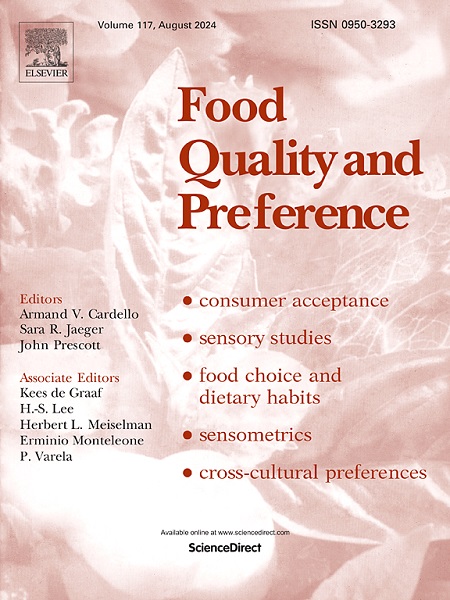Persuasion strategies of convenience food labels: Integrating typeface design and brand certification through the Lens of a dual processing model
IF 4.9
1区 农林科学
Q1 FOOD SCIENCE & TECHNOLOGY
引用次数: 0
Abstract
The exponential growth of the market for convenience foods has added facilitation to many people's lives; however, consumers continue to hold mixed views regarding the quality and safety of such foods. Marketers should explore persuasive strategies to counter these negative perceptions and encourage the consumption of convenience foods. This study conducted two online experiments from the perspective of visual persuasion and design to examine the effects of typeface and the inclusion of brand certification in label designs on consumers' purchase intentions, guided by the dual processing model. The findings indicate that handwritten labels are more effective than machine-written labels are in enhancing consumers' purchase intentions of convenience foods. These enhanced purchase intentions are related to stronger perceptions of a human presence and confidence in the product when handwritten typeface is used. In addition, a moderated serial mediation analysis revealed that brand certification labels, which serve as a traceable source of product quality and credibility, positively influence consumers' perceptions of human presence, further boosting consumers' confidence in a product and their purchase intention. The positive effect of handwritten typeface is particularly pronounced when a label does not include a brand certification, and the presence of such a certification tends to weaken the effect of typeface. These findings clarify the application of the dual processing model and offer theoretical insights and practical guidance for packaging design and marketing strategies for convenience foods.
方便食品标签的说服策略:以双加工模型为视角,将字体设计与品牌认证相结合
方便食品市场的指数级增长为许多人的生活增添了便利;然而,消费者对这类食品的质量和安全性仍然持有不同的看法。营销人员应该探索有说服力的策略来对抗这些负面看法,并鼓励方便食品的消费。本研究在双加工模型的指导下,从视觉说服和设计的角度进行了两个在线实验,考察了字体和标签设计中包含品牌认证对消费者购买意愿的影响。研究结果表明,在提高消费者对方便食品的购买意愿方面,手写标签比机器书写标签更有效。当使用手写字体时,这些增强的购买意图与更强的人类存在感和对产品的信心有关。此外,有调节的系列中介分析显示,品牌认证标签作为产品质量和信誉的可追溯来源,积极影响消费者对人的存在的感知,进一步提高消费者对产品的信心和购买意愿。当标签不包含品牌认证时,手写字体的积极作用尤为明显,而这种认证的存在往往会削弱字体的效果。这些研究结果阐明了双重加工模型的应用,为方便食品的包装设计和营销策略提供了理论见解和实践指导。
本文章由计算机程序翻译,如有差异,请以英文原文为准。
求助全文
约1分钟内获得全文
求助全文
来源期刊

Food Quality and Preference
工程技术-食品科技
CiteScore
10.40
自引率
15.10%
发文量
263
审稿时长
38 days
期刊介绍:
Food Quality and Preference is a journal devoted to sensory, consumer and behavioural research in food and non-food products. It publishes original research, critical reviews, and short communications in sensory and consumer science, and sensometrics. In addition, the journal publishes special invited issues on important timely topics and from relevant conferences. These are aimed at bridging the gap between research and application, bringing together authors and readers in consumer and market research, sensory science, sensometrics and sensory evaluation, nutrition and food choice, as well as food research, product development and sensory quality assurance. Submissions to Food Quality and Preference are limited to papers that include some form of human measurement; papers that are limited to physical/chemical measures or the routine application of sensory, consumer or econometric analysis will not be considered unless they specifically make a novel scientific contribution in line with the journal''s coverage as outlined below.
 求助内容:
求助内容: 应助结果提醒方式:
应助结果提醒方式:


